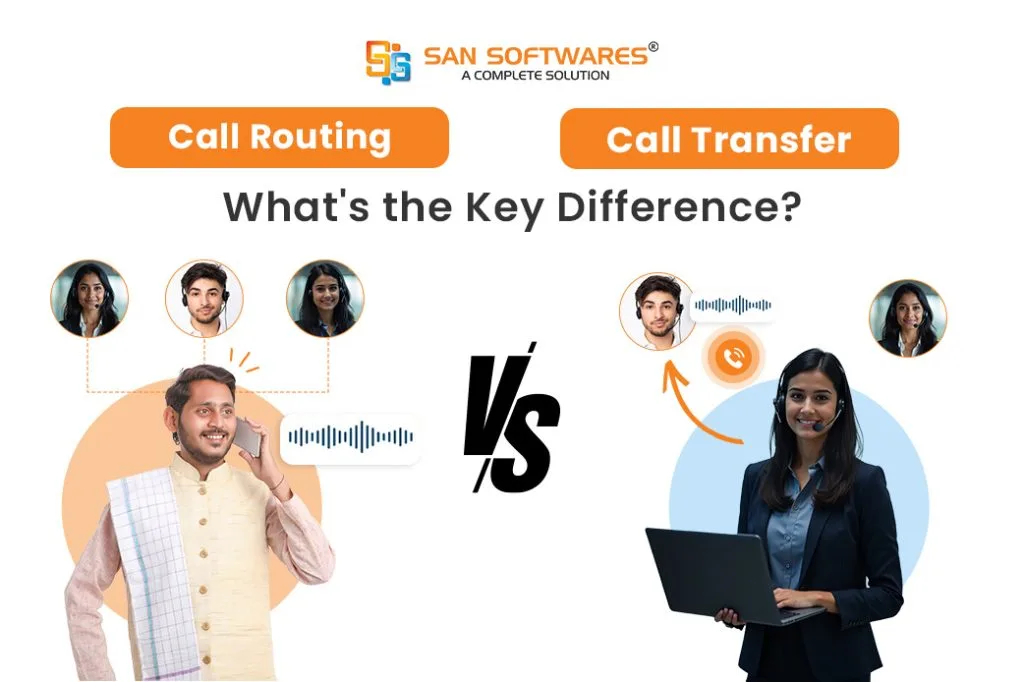
Do you know? 46% of the customer callers are placed on hold, resulting in a 15% decline in CSAT and a 19% reduction in FCR.
In this rapidly growing world of customer support and sales, seamless call handling can make or break the customer experience. Two crucial features of the calling solution in this process are Call Routing and call transfer. While both may sound similar, they serve different purposes and impact how efficiently your call center operates.
We’ll go over some of the main distinctions between routing and transferring in this blog.
Call Routing is a Call Center Software feature that directs incoming calls to the appropriate agent, department, or queue based on predefined rules. This process occurs before the call is answered, ensuring that customers connect with the right resource from the beginning.
Proper routing reduces wait times, minimizes call transfers, and improves first call resolution (FCR) rates. For example, the billing department should not connect a customer seeking technical support to a skilled technician.
Call Transfer occurs after an agent has answered the call and determines that it needs to be moved to another person or department. This can be done manually by the agent or automatically via the phone system.
Mixing up Call Routing with transferring can lead to worse call management, lower efficiency, and frustrated customers.
Here’s why clarity matters:

Both Call Routing and call transfer are part of the Call Center Solution, which plays a crucial role in call center operations, but they are not interchangeable. Routing is about getting it right from the start, while transfer is about redirecting effectively when required. Mastering both can dramatically improve customer satisfaction and overall efficiency.
Are you looking for a powerful call center solution that includes advanced routing and transfer features? Explore SanCCS, designed to maximize efficiency and customer satisfaction.
Call routing directs incoming calls to the right agent or department before they are answered, while call transfer moves an active call from one agent to another when additional assistance is needed.
Call routing improves efficiency by reducing wait times, minimizing misdirected calls, and enhancing First Call Resolution (FCR), leading to higher customer satisfaction.
Call transfer should be used when a query requires specialized expertise, escalation to senior staff, or redirection to a department like billing, sales, or technical support.
Advanced call center software uses IVR, ACD, and AI-powered routing to ensure accurate call distribution and smooth transfers, improving overall call handling efficiency.
AI enhances call routing by analyzing customer data and previous interactions to direct calls to the most suitable agent, ensuring faster resolutions and better experiences.
Yes, proper routing and efficient transfers reduce hold times and repetitive explanations, directly boosting First Call Resolution (FCR) and Customer Satisfaction (CSAT) metrics.
SAN Softwares is a company dedicated to providing complete software solutions to Corporate and end-user customers.

SAN Softwares is a company dedicated to providing complete software solutions to Corporate and end-user customers.
